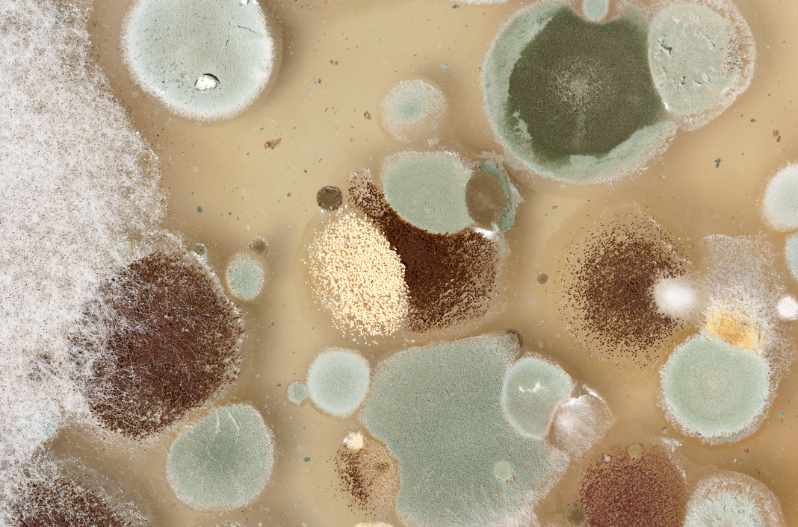When it comes to so-called dangerous molds, everyone focuses on color. However, different types of molds can appear black, green, grey, or even white. Instead of focusing on color, it’s better to remove mold growth before it damages your home. Here is everything you need to know about the color of mold.
What Colors Are Mold?
Although usually black, green, or grey, mold can be any color. Most molds are actually several different colors. Other common colors include brown, white, purple, orange, yellow, pink, and red. The color is determined by the kind of mold and several other factors.
- Temperature – Depending on the temperature, molds will change shade or even color. However, not all molds like the same temperature range.
- Moisture Content – The amount of moisture also impacts the color. Higher amounts of water usually create bold or vibrant molds, but sometimes it will dull the color.
- Humidity Level – Like moisture, humidity can make some molds more colorful while others look dull.
- Food Source – Mold will grow on any organic material. Since it decomposes whatever it’s growing on, the food will influence the color.
- Time – Lastly, colors will change the longer they grow. Usually, grey or black mold will develop colors. However, some more colorful molds will turn white or black as they age.
Because it changes depending on these conditions, the color of mold means almost nothing in terms of health risks or potential damage.
Common Mold Colors
The most common colors of mold growth are black, green, and grey. However, most species of mold are a mix of many different colors. Depending on the conditions, mold can be any of the following colors:
- Black
- Green
- Grey
- Brown
- White
- Pink
- Red
- Purple
- Blue
- Orange
- Yellow
Can You Tell the Type of Mold You Have by the Color?
You cannot tell the type of mold just by the color since it will change depending on the temperature, moisture and humidity levels, food source, and time. It’s also common to have several kinds of mold spores growing at the same time, each a different color.
Although most people are referring to Stachybotrys chartarum or so-called toxic black mold, black is the most common color of mold. Regardless of the species, black-colored mold is extremely common in houses with moisture or humidity issues.
While fuzzy, green mold is usually found on food, it’s the second most prevalent color inside the home. It is usually found on walls or carpeting with persistent water issues.
Grey-colored mold is usually the first to appear, especially if you have humidity or condensation problems. While some grey can remain, the color usually changes to a mix of black and green over time.
Talk to a local pro now. Certified Restoration Local mold removal specialists offer thorough mold assessments and fast, free quotes.
What Color Mold Is the Most Dangerous?
While most people would say black mold, no color of mold is necessarily more dangerous than another. Since colors can change, it’s impossible to classify the risks by color alone.
All molds have some risks. However, concerns about toxic mold are often overstated. Common health hazards include allergy-like symptoms, but mold exposure can be more severe for those with asthma or respiratory issues.
Mold is more likely to damage your home than cause significant health issues. If you do not remove it, it can break down walls, ruin carpeting, and destroy cabinets.
Let our local remediation experts repair and restore your home quickly, regardless of the color of your mold problem. We kill the mold and address the water issue to keep it from coming back. Call 1-888-681-1071 now to talk to a local mold removal specialist near you.





